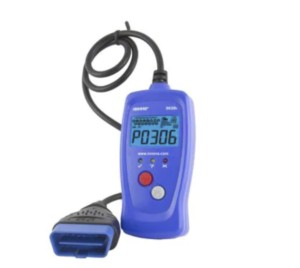A vehicle’s diagnostic system can be a lifesaver when it comes to identifying potential issues. One common code that often appears is the Obdii Code P0456. This code indicates a small leak in the evaporative emission control (EVAP) system. While it might seem minor, understanding its causes, symptoms, and fixes is crucial for maintaining your vehicle’s health and environmental responsibility.
What is the EVAP System and What Does P0456 Mean?
The EVAP system prevents fuel vapors from escaping into the atmosphere. It captures these vapors in a charcoal canister and then purges them into the engine for combustion. A small leak anywhere in this intricate system can trigger the P0456 code, indicating that the system isn’t holding pressure as it should. This leak can range from a loose gas cap to a more serious issue within the system itself.
Recognizing the Symptoms of a P0456 Code
Often, a P0456 code doesn’t manifest in noticeable driving problems. The most common symptom is an illuminated Check Engine Light. However, some drivers might detect a faint fuel odor, experience slightly reduced fuel economy, or hear a hissing sound coming from the fuel tank area. While these symptoms might seem insignificant, addressing the underlying issue promptly is essential.
Common Causes of OBDII Code P0456
Several components within the EVAP system can contribute to a P0456 code:
- Loose or Damaged Gas Cap: The most frequent culprit is often a loose, cracked, or missing gas cap. This simple fix can sometimes resolve the issue.
- EVAP System Leaks: Leaks can occur in various parts of the system, including:
- Fuel Tank: A small hole or crack in the fuel tank itself.
- Fuel Lines and Hoses: Damage, cracks, or disconnections in the lines carrying fuel vapor.
- Charcoal Canister: Cracks or damage to the canister that stores fuel vapors.
- Purge Valve: A malfunctioning purge valve responsible for releasing vapors into the engine.
- Vent Solenoid: A faulty vent solenoid can prevent the system from properly sealing.
Diagnosing and Fixing P0456
Diagnosing the specific cause of a P0456 code often requires a professional approach. A smoke machine can be used to pinpoint the leak’s location by introducing smoke into the EVAP system and observing where it escapes.
Repairing the issue typically involves:
- Tightening or Replacing the Gas Cap: If the gas cap is the issue, tightening or replacing it is a straightforward solution.
- Repairing or Replacing Damaged Components: Leaky hoses, damaged canisters, or faulty valves need repair or replacement. This might involve patching small holes, replacing hose sections, or installing new components entirely.
Conclusion: Addressing P0456 for Optimal Performance
Addressing the OBDII code P0456 is crucial not only for passing emissions tests but also for maintaining the overall health of your vehicle. While a loose gas cap might be a simple fix, more complex leaks require professional diagnosis and repair. By understanding the intricacies of the EVAP system and the potential causes of P0456, you can take proactive steps to ensure your vehicle runs efficiently and minimizes its environmental impact. Ignoring this code could lead to more significant issues down the road. Consult a qualified mechanic if you suspect a problem with your EVAP system.

